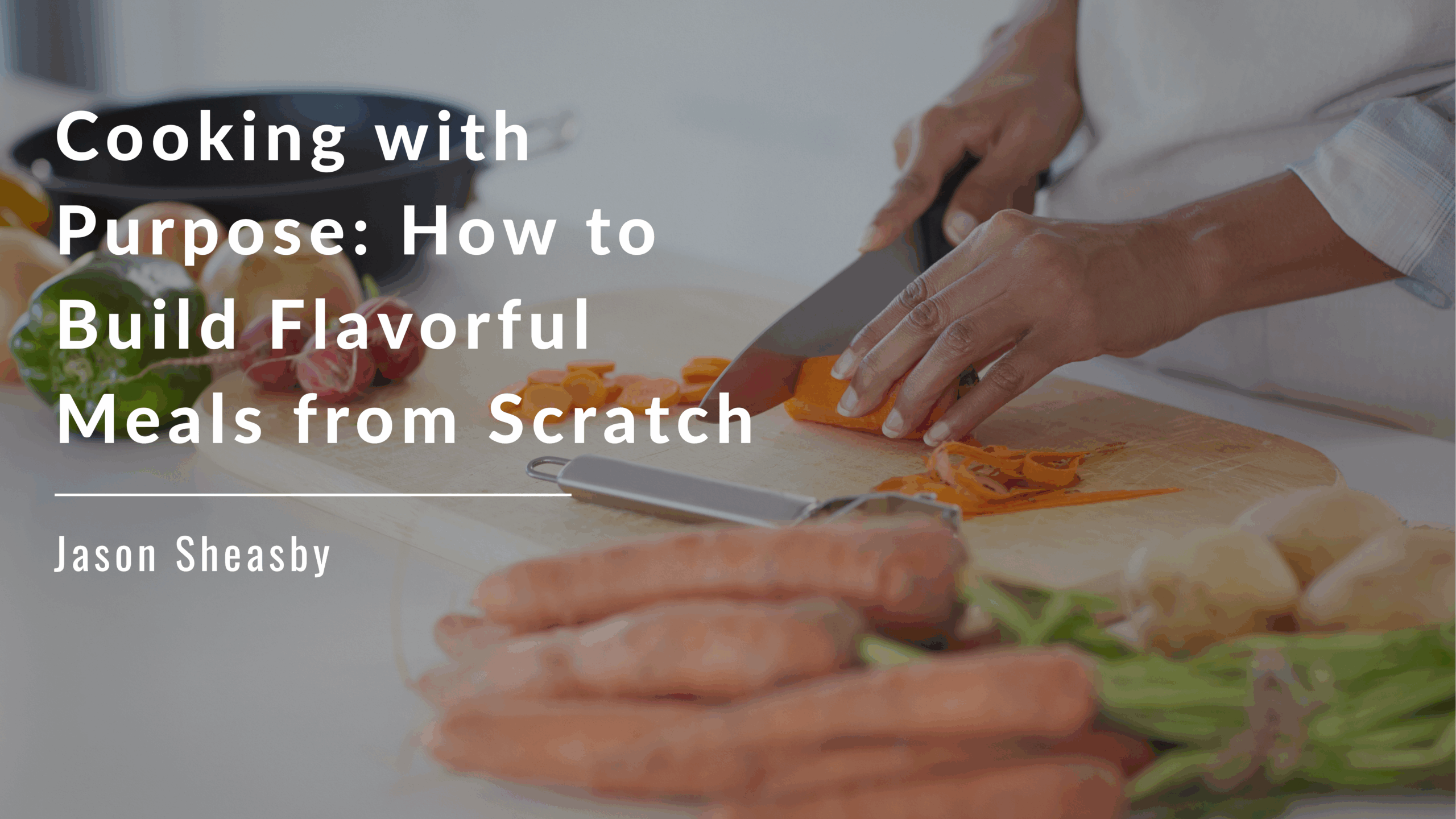
In today’s fast-paced world, it’s easy to fall into the trap of relying on pre-packaged meals or dining out, especially when life gets hectic. However, there is something deeply satisfying about preparing a meal from scratch, knowing every ingredient that’s going into your dish and having the freedom to craft flavors exactly the way you like. Cooking with purpose is more than just following a recipe; it’s about understanding the ingredients, building flavor profiles, and connecting with the food you’re preparing. In this blog, we’ll dive into how to create flavorful meals from scratch, making each dish not just nutritious, but also rich in taste and texture.
1. Start with Fresh, Quality Ingredients
The foundation of any great meal is fresh, high-quality ingredients. You can’t build flavor without having good components to work with. Fresh vegetables, ripe fruits, quality meats, and well-aged spices are the cornerstones of flavorful cooking. Think of your ingredients as the building blocks of a recipe—what you start with will determine the final product. Whenever possible, try to source local, seasonal ingredients as they tend to be the freshest and most flavorful. Farmers’ markets, local grocers, or even backyard gardens are great places to begin your search.
2. Understanding Flavor Profiles
Every dish has a specific flavor profile, which is the overall taste and aroma created by the combination of various ingredients. Whether you’re creating a savory soup or a sweet dessert, understanding these profiles is key to cooking with purpose. Savory dishes often rely on combinations of salty, umami, and acidic flavors, while sweet dishes are typically built around sugar, spices, and fat. A great cook understands how different tastes interact and how they can be balanced to create harmony. For example, adding a dash of vinegar to a rich, creamy sauce can elevate the dish and bring it to life. The secret is in balance.
3. Layering Flavors with Spices and Herbs
Spices and herbs are the magic ingredients that take a simple dish and transform it into something memorable. Layering flavors is about adding spices and herbs in stages during the cooking process, allowing each to shine through and contribute to the dish’s depth. For instance, sautéing onions and garlic in oil at the start of a recipe builds a savory base that will enhance the flavor of whatever you add next. Fresh herbs like basil, rosemary, and thyme bring brightness and complexity, while dried spices like cumin, turmeric, and paprika provide warmth and earthiness. By seasoning as you go, you can better control the flavor and achieve a more nuanced taste.
4. The Importance of Salt
Salt is often regarded as the most essential ingredient in cooking. It doesn’t just make food taste salty; it enhances and brings out the natural flavors of other ingredients. But salt should be used thoughtfully—it can easily overpower a dish if added too early or too much. A key principle in cooking with purpose is learning to add salt at different stages of the cooking process. Seasoning at the beginning helps to build flavor, while finishing with a sprinkle of salt at the end helps to heighten the dish’s final taste. Always taste your food as you go and adjust accordingly.
5. Using Acid to Balance and Brighten
Acid is one of the most underrated ingredients in cooking. A splash of vinegar, lemon juice, or even a bit of tamarind can cut through rich, fatty dishes, providing a balancing effect. It also brightens flavors and enhances freshness, especially in salads, sauces, or roasted meats. Consider adding a squeeze of lemon to a bowl of hummus or a dash of balsamic vinegar to a tomato salad to bring out the natural flavors. Understanding when to introduce acidity is crucial—too much acid can make a dish too tangy, while the right amount can elevate it to perfection.
6. Mastering the Art of Sautéing and Browning
The cooking method you choose can significantly impact the flavor of a dish. Sautéing, roasting, grilling, and braising are all techniques that allow for complex flavor development. When you sauté vegetables in oil or butter, you’re not just cooking them—you’re caramelizing their sugars, which creates depth and richness. Similarly, browning meat before adding it to a stew or braise brings out a savory complexity that’s hard to replicate with other methods. Taking the time to properly sear ingredients before adding them to the pot is an investment that pays off in taste.
7. The Magic of Stocks and Broths
One of the cornerstones of cooking with purpose is the use of homemade stocks and broths. While store-bought versions can be convenient, nothing compares to the depth of flavor found in a homemade stock made from bones, vegetables, and herbs. Stocks form the base for soups, sauces, and stews, providing a rich, savory foundation that enhances every bite. The beauty of making your own stock is that you can control the seasoning and use the scraps from other meals, minimizing waste and maximizing flavor.
8. Balance and Texture in Every Bite
Texture is just as important as flavor when creating a meal. A great dish balances soft, creamy elements with crunchy, crisp ones, and tender meats with firm vegetables. Think about a hearty stew—without the crunch of fresh herbs or the crispiness of toasted bread on top, the dish might feel flat. Consider incorporating textures by adding toasted nuts to a salad, a crunchy crust to a chicken dish, or a smooth sauce to contrast a starchy side. The goal is to keep each bite interesting and dynamic, providing a sensory experience beyond taste.
9. Patience and Time: The Secret to Depth of Flavor
Cooking with purpose often means taking your time to develop flavors slowly and patiently. Some dishes, like braised short ribs or a rich soup, benefit from long, slow cooking, allowing the flavors to meld and develop over time. Rushing through recipes often results in a shallow, one-note flavor profile. Instead, embrace the process. Let stews simmer, let dough rise, and let spices bloom. The time spent preparing and cooking your meal is an investment that will reward you with complex, layered flavors.
10. Taste and Adjust as You Go
One of the most important aspects of cooking with purpose is tasting as you go. No matter how well you know a recipe, it’s essential to keep checking the flavor throughout the cooking process. Adjust the seasoning, add more acid or salt as needed, and experiment with different herbs and spices until the dish tastes just right. Cooking is a fluid process, and the more you practice, the better you will become at making these adjustments intuitively.
Conclusion: Cooking with Purpose
Cooking with purpose is about more than just following a recipe—it’s about creating a connection to your food, understanding the ingredients, and crafting meals that are both flavorful and meaningful. By starting with fresh ingredients, layering flavors, balancing textures, and taking the time to cook thoughtfully, you can create dishes that are not only delicious but also satisfying. Whether you’re preparing a simple weeknight dinner or an elaborate feast, cooking with purpose makes each meal an opportunity to connect with your food, your health, and your creativity. So the next time you step into the kitchen, remember: cooking with intention leads to the most flavorful meals.

